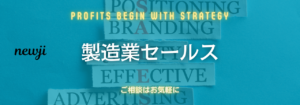- お役立ち記事
- The Art of Firing: Unveiling the Intricacies of Japanese Manufacturing Techniques

The Art of Firing: Unveiling the Intricacies of Japanese Manufacturing Techniques

目次
Introduction to Japanese Manufacturing Techniques
Japanese manufacturing is renowned worldwide for its precision, efficiency, and innovation. The intricate methods developed over decades have set benchmarks in various industries, from automotive to electronics. Understanding these techniques is essential for procurement and purchasing professionals aiming to collaborate with Japanese suppliers effectively.
The Philosophy Behind Japanese Manufacturing
Kaizen: Continuous Improvement
Kaizen, meaning “continuous improvement,” is a cornerstone of Japanese manufacturing. It emphasizes incremental changes that collectively enhance efficiency and quality. Procurement teams benefit from this philosophy by engaging in ongoing dialogues with suppliers to identify and implement improvements.
Just-In-Time (JIT) Production
JIT production focuses on minimizing inventory levels and reducing waste by producing goods only as needed. This approach requires precise coordination between manufacturers and suppliers, necessitating reliable procurement practices to ensure timely deliveries.
Advantages of Collaborating with Japanese Suppliers
Quality Assurance
Japanese suppliers are known for their stringent quality control processes. Partnering with such suppliers ensures that products meet high standards, reducing the risk of defects and returns.
Technological Expertise
Japan’s focus on technology and innovation means that suppliers often incorporate the latest advancements into their manufacturing processes. This expertise can lead to superior products and more efficient production timelines.
Cultural Commitment to Excellence
The Japanese work ethic emphasizes discipline, respect, and dedication to craftsmanship. This cultural commitment translates into reliable and consistent supplier performance, beneficial for long-term procurement strategies.
Challenges in Working with Japanese Manufacturers
Language Barriers
Communication challenges can arise due to language differences. Effective procurement requires clear communication to ensure that specifications and expectations are accurately conveyed and understood.
Cultural Differences
Understanding and respecting cultural nuances is crucial. Japanese business practices may differ from Western approaches, and misalignment can lead to misunderstandings or conflicts in the procurement process.
High Costs
While quality is a significant advantage, it often comes at a higher cost. Balancing budget constraints with the desire for top-tier products requires strategic negotiation and value assessment.
Supplier Negotiation Techniques
Building Strong Relationships
Establishing trust is fundamental in Japanese business culture. Investing time in building strong, respectful relationships can lead to more favorable negotiation outcomes and long-term partnerships.
Understanding Value Beyond Price
Japanese suppliers may prioritize factors such as quality, reliability, and long-term collaboration over immediate price reductions. Recognizing and valuing these aspects can facilitate more meaningful negotiations.
Patience and Persistence
Negotiations may take longer due to the careful consideration and consensus-driven decision-making processes typical in Japanese businesses. Patience and persistence are essential traits for successful negotiations.
Market Conditions and Trends
Technological Advancements
Japan continues to lead in areas like robotics, automation, and materials science. Staying informed about these advancements can help procurement professionals anticipate market shifts and adapt their strategies accordingly.
Global Supply Chain Dynamics
Global events can impact supply chain stability. Understanding the dynamics of international trade, including tariffs and geopolitical tensions, is crucial for maintaining resilient procurement practices.
Sustainability and Environmental Standards
There is a growing emphasis on sustainable manufacturing processes in Japan. Collaborating with suppliers who prioritize environmental responsibility can enhance a company’s sustainability profile and meet regulatory requirements.
Best Practices for Procurement and Purchasing
Comprehensive Supplier Evaluation
Conduct thorough assessments of potential suppliers, considering factors such as financial stability, production capabilities, quality control measures, and cultural compatibility.
Clear Communication of Specifications
Provide detailed and precise specifications to suppliers to minimize misunderstandings and ensure that products meet the required standards.
Regular Performance Reviews
Implement a system for ongoing evaluation of supplier performance, including metrics for quality, delivery times, and responsiveness. Use this data to make informed decisions about future collaborations.
Flexibility and Adaptability
Be prepared to adapt procurement strategies in response to changing market conditions, technological advancements, and evolving business needs.
Leveraging Japanese Manufacturing Skills
Adoption of Lean Manufacturing Principles
Incorporate lean manufacturing principles learned from Japanese suppliers to enhance efficiency and reduce waste within your own operations.
Technology Transfer and Collaboration
Engage in technology transfer agreements or collaborative projects with Japanese suppliers to gain access to advanced technologies and innovative processes.
Training and Development
Invest in training procurement and purchasing teams to understand Japanese manufacturing techniques and cultural practices, fostering more effective collaboration and knowledge sharing.
Case Studies: Successful Partnerships
Automotive Industry Collaboration
Many global automotive giants have successfully partnered with Japanese suppliers to enhance their production lines’ efficiency and quality, resulting in superior vehicle performance and customer satisfaction.
Electronics Sector Innovations
Collaborations between multinational electronics companies and Japanese suppliers have led to groundbreaking innovations in consumer electronics, setting new industry standards.
Conclusion
Navigating the complexities of Japanese manufacturing techniques requires a deep understanding of both the technical aspects and the cultural nuances that drive these processes. By leveraging the strengths of Japanese suppliers—such as their commitment to quality, continuous improvement, and technological expertise—procurement and purchasing professionals can achieve significant benefits. However, overcoming challenges like language barriers and cultural differences is essential for building successful, long-term partnerships. Implementing best practices in supplier evaluation, communication, and performance management will further enhance these collaborations, leading to sustained growth and competitive advantage in the global market.
 資料ダウンロード
資料ダウンロード
QCD管理受発注クラウド「newji」は、受発注部門で必要なQCD管理全てを備えた、現場特化型兼クラウド型の今世紀最高の受発注管理システムとなります。
 NEWJI DX
NEWJI DX
製造業に特化したデジタルトランスフォーメーション(DX)の実現を目指す請負開発型のコンサルティングサービスです。AI、iPaaS、および先端の技術を駆使して、製造プロセスの効率化、業務効率化、チームワーク強化、コスト削減、品質向上を実現します。このサービスは、製造業の課題を深く理解し、それに対する最適なデジタルソリューションを提供することで、企業が持続的な成長とイノベーションを達成できるようサポートします。
 製造業ニュース解説
製造業ニュース解説
製造業、主に購買・調達部門にお勤めの方々に向けた情報を配信しております。
新任の方やベテランの方、管理職を対象とした幅広いコンテンツをご用意しております。
 お問い合わせ
お問い合わせ
コストダウンが利益に直結する術だと理解していても、なかなか前に進めることができない状況。そんな時は、newjiのコストダウン自動化機能で大きく利益貢献しよう!
(β版非公開)





